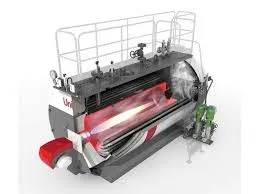
नोभ . 12, 2024 19:17 Back to list
low pressure steam pressure
Understanding Low Pressure Steam Systems
Low pressure steam systems play a crucial role in various industrial and commercial applications. Steam is produced by boiling water, and its ability to transfer heat makes it an efficient medium for energy transfer, process heating, and even driving turbines. However, managing low pressure steam requires a nuanced understanding of steam generation, distribution, and utilization to ensure efficiency and safety.
Understanding Low Pressure Steam Systems
The generation of low pressure steam involves the use of boilers, which are devices designed to convert water into steam by applying heat. The choice of boiler type—fire-tube or water-tube—will depend on factors such as the scale of operation and specific application requirements. Fire-tube boilers are generally favored for low pressure applications due to their simplicity and efficiency. These boilers contain hot gases from fuel combustion passing through tubes surrounded by water, thus heating it and converting it to steam.
low pressure steam pressure

Once steam is produced, it needs to be efficiently distributed throughout the facility. Steam pipes must be insulated to minimize heat loss, as even modest losses can significantly decrease overall system efficiency. Properly sized and maintained piping systems are essential for ensuring that steam reaches its destination with minimal resistance and energy loss. Leaks, improper gradients, and other issues can reduce the effectiveness of the steam system and lead to increased operational costs.
Utilization of low pressure steam involves various processes, including heating, drying, and even power generation. In food processing, for example, steam is used for cooking, sterilization, and heating, promoting efficient operations. The textile industry uses steam to maintain temperature and humidity levels during manufacturing processes. In HVAC systems, steam is employed for heating buildings, offering a uniform and comfortable temperature.
However, operating low pressure steam systems comes with its own challenges. Monitoring and maintaining water quality is critical, as impurities can lead to corrosion and scaling within the system. Regular maintenance checks—and the use of water treatment solutions—are essential strategies to prolong the lifespan of equipment and minimize downtime.
In conclusion, low pressure steam systems are integral in many sectors due to their efficiency and cost-effectiveness. Understanding the intricacies of steam generation, distribution, and application is vital for operators aiming to leverage its benefits fully. With proper management and maintenance, low pressure steam can enhance productivity and ensure that facilities operate smoothly and safely, making it a valuable asset in industrial applications.
-
Efficient Biomass Fired Hot Water Boiler | AI Heating Solution
NewsAug.01,2025
-
High-Efficiency Gas Thermal Oil Boilers | HPT Models
NewsJul.31,2025
-
Oil Fired Hot Water Boilers Sale - High Efficiency & Affordable
NewsJul.31,2025
-
High-Efficiency Commercial Oil Fired Steam Boiler for Industry
NewsJul.30,2025
-
High-Efficiency Biomass Fired Thermal Oil Boiler Solutions
NewsJul.30,2025
-
High Efficiency Gas Fired Thermal Oil Boiler for Industrial Heating
NewsJul.29,2025
Related PRODUCTS






















